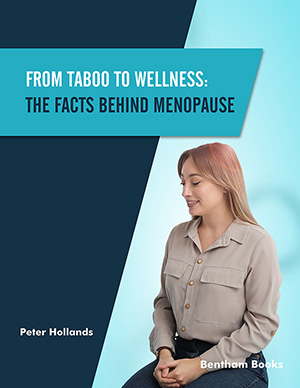[1]
Bushnik T, Cook JL, Yuzpe AA, Tough S, Collins J. Estimating the prevalence of infertility in Canada. Hum Reprod 2012; 27(3): 738-46.
[2]
World Health Organization. Infertility is a global public health
issue. Available from:. http://www.who.int/ reproductivehealth/
topics/infertility/perspective/en/ (Accessed on: December 28, 2016).
[3]
Cousineau TM, Domar AD. Psychological impact of infertility. Best Pract Res Clin Obstet Gynaecol 2007; 21(2): 293-308.
[4]
Connolly MP, Hoorens S, Chambers GM. The costs and consequences of assisted reproductive technology: an economic perspective. Hum Reprod 2010; 16(6): 603-13.
[5]
Macaluso M, Wright-Schnapp TJ, Chandra A, et al. A public health focus on infertility prevention, detection, and management. Fertil Steril 2010; 93(1): 16.e1-16.e10.
[6]
Machado H, Remoaldo PC. Incomplete women and strong men –
accounts of infertility as a gendered construction of well-being. In:
Harris B, Gálvez L, Machado H (Eds.). Gender & Well-being in
Europe: Historical and Contemporary Perspectives. London:
Ashgate Publishing 2009; 223-42.
[7]
Dondorp W, Wert G, Pennings G, et al. Oocyte cryopreservation for age-related fertility loss. Hum Reprod 2012; 27(5): 1231-7.
[8]
Ombelet W. Is global access to infertility care realistic? The Walking Egg Project. Reprod BioMedic Online 2014; 28: 267-72.
[9]
Wellons MF, Lewis CE, Schwartz SM, et al. Racial differences in self-reported infertility and risk factors for infertility in a cohort of black and white women: The CARDIA women’s study. Fertil Steril 2008; 90(5): 1640-8.
[10]
Chambers GM, Hoang VP, Zhu R, Illingworth PJ. A reduction in public funding for fertility treatment - an econometric analysis of access to treatment and savings to government. BMC Health Serv Res 2012; 12: 142-57.
[11]
Premkuma BJ, Agarwal A. Female infertility and assisted reproduction: Impact of oxidative stress-An update. Curr Womens Health Rev 2012; 8: 183-207.
[12]
Ombelet W. The walking egg project: Universal access to infertility care – from dream to reality. Facts Views Vis ObGyn 2013; 5(2): 161-75.
[13]
Ombelet W. False perceptions and common misunderstandings surrounding the subject of infertility in developing countries. ESHRE Monog 2008; 2008: 8-11.
[14]
World Health Organization. Progress Report in Reproductive
Health Research. No. 23. Geneva: Switzerland;. 2003.
[15]
Kessler LM, Craig BM, Plosker SM, Reed DR, Quinn GP. Infertility evaluation and treatment among women in the United States. Fertil Steril 2013; 100(4): 1025-32.
[16]
Domar A, Gordon K, Garcia-Velasco J, et al. Understanding the perceptions of and emotional barriers to infertility treatment: a survey in four European countries. Hum Reprod 2012; 27(4): 1073-9.
[17]
Sundby J. Infertility in public health: The case of Norway. Facts Views Vis ObGyn 2010; 2(3): 177-81.
[18]
Sanchez RM, Ciconelli RM. Conceitos de acesso à saúde. Rev Panam Salud Publica 2012; 31(3): 260-8.
[19]
Andersen RM, McCutcheon A, Aday LA, Chiu GY, Bell R. Exploring dimensions of access to medical care. Health Serv Res 1983; 18(1): 49-74.
[20]
Gulliford M, Figueroa-Muñoz J, Morgan M. Meaning of ‘access’ in
health care. In Gulliford M, Morgan M (Ed.). Access to Health
Care. Routledge: London 2003; 1-12.
[21]
Marmot M, Allen J, Bell R, Bloomer E, Goldblatt P. WHO European review of social determinants of health and the health divide. Lancet 2012; 380(9846): 1011-29.
[22]
Chapman JL, Zechel A, Carter YH, Abbott S. Systematic review of recent innovation in service provision to improve access to primary care. Br J Gen Pract 2004; 54(502): 374-81.
[23]
Nachtigall RD. International disparities in access to infertility services. Fertil Steril 2006; 85(4): 871-5.
[24]
Paez A, Mercado RG, Morency C, Roorda C. Accessibility to health care facilities in Montreal Island: An application of relative accessibility indicators from the perspective of senior and non-senior residents. Int J Health Geogr 2010; 9: 52-67.
[25]
Figueroa Pedraza D, Cavalcanti Costa GM. Accessibility to public health services: The vision of the users of the Family Health Program in Campina Grande, state of Paraiba, Brazil. Enfermeria Global 2014; 13: 267-78.
[26]
Chambers GM, Hoang VP, Illingworth PJ. Socioeconomic disparities in access to ART treatment and the differential impact of a policy that increased consumer costs. Hum Reprod 2013; 28(11): 3111-7.
[27]
Chambers GM. The impact of consumer affordability on access to assisted reproductive technologies and embryo transfer practices. An international analysis. Fertil Steril 2014; 101(1): 191-8.
[28]
World Health Organization. WHO Evaluation of National Health
Plan Portugal (2004-2010). 2010. Available from:. http://pns.
dgs.pt/files/2010/02/WHO-E.pdf (Accessed on: December 12,
2016).
[29]
Direção-Geral da Saúde. Plano Nacional de Saúde 2012 – 2016-
Eixo Estratégico-Qualidade em Saúde. Lisboa: DGS. 2012.
[30]
Entidade Reguladora da Saúde (ERS). Estudo do Acesso aos
Cuidados de Saúde Primários do SNS. Lisbon: GGS. 2009.
[31]
Bardin L. Analyse de contenu Paris: PUF; 2013.
[32]
Instituto Nacional de Estatística. Classificação Portuguesa das
Profissões 2010. Lisboa: INE;. 2011.
[33]
Thonneau P, Bujan L, Multigner L, Mieuss R. Occupational heat exposure and male fertility: A review. Hum Reprod 1998; 13(8): 2122-5.
[34]
Augusto A. Infertilidade e Reprodução Medicamente Assistida em
Portugal: Dos problemas privados aos assuntos públicos [PhD
Tesis]. Beira Interior: Universidade da Beira Interior; 2004.
[35]
Moutinho S. Tudo por um Filho Viagem ao Mundo da
Infertilidade em Portugal Porto: Publicações Dom Quixote 2003.
[36]
Silva S, Barros H. Perspectives on access to in vitro fertilization in Portugal. Rev Saude Publica 2012; 46(2): 344-50.
[37]
Silva S. Médicos, Juristas e “Leigos” – Um estudo das representações
sociais sobre a reprodução medicamente assistida [Sociology
Thesis]. Porto: University of Porto – Faculty of Letters 2008.
[38]
Aldana JM, Piechulek H, Al-Sabir A. Client satisfaction and quality of health care in rural Bangladesh. Bull World Health Organ 2001; 79(6): 512-7.
[39]
Faria J. Acesso aos tratamentos de infertilidade no Centro
Hospitalar do Alto Ave [Master thesis] Braga: Universidade do
Minho 2013.












